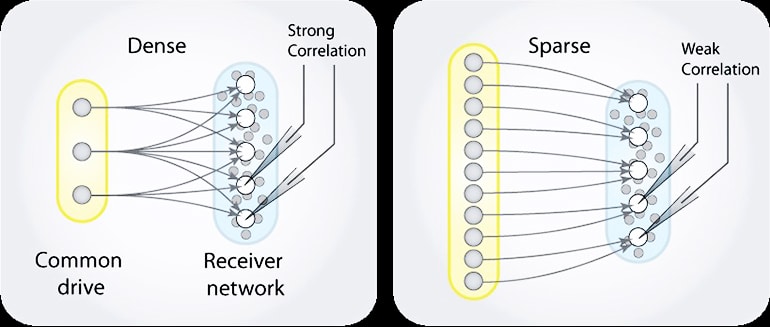
(Credit: lunamom58/Flickr )
Turtle spine signals reveal how movement starts
The neurons of itchy turtles show that movement most likely starts in a network of cells, not one "command center."

Our bodies most likely generate and maintain movement through a network of cells, rather than from a single point, researchers report.
“Most movements are actually generated in the spinal cord. Naturally, there is a conversation with high-ranking parts of the nervous system, such as the cerebrum, but there are also reflexes that simply stem from the back,” says Rune W. Berg, associate professor and head of research in the neuroscience department at the University of Copenhagen.
He and his research group are behind a study of the network between nerve and muscle cells, which provides completely new insight into the ways in which the body generates and maintains movements.
Scratching turtles and the origin of movement
In the study, the research group used electrodes to study the spinal cord reflex of turtles when they scratched themselves with one hind leg. Dogs, cats, and a number of other mammals also have this reflex.
Humans are likewise equipped with a variety of spinal reflexes. And although in terms of the evolution, we are rather distant from the turtle, scientists believe that many of the basic mechanisms are the same.
Thus, when the turtle rhythmically scratches itself using crawl movements from its hind leg, the fireworks of lightning-quick neurological impulses set off inside the shell are not far from the mechanisms that also trigger our own muscles.
So far, it has been a common assumption that the activation of muscle neurons originates from some sort of command center that sends a signal to many cells at one time.

“Because the origin of movement has been difficult to find, it has long been assumed that it is a small core that sets the pace. Like some kind of metronome. But our data has shown that it may in fact be a large network,” says Henrik Lindén, an assistant professor from the research group behind the study.
To test whether it was a matter of small command units or a large network, the researchers compared the relatively quiet rhythm of the turtle’s movement with the rapid neurological impulses from the spine.
A network of cells and signals
To the surprise of the research group, the measurements showed no evidence of correlation—and thus no evidence that the neurological signals in multiple cells should have originated from the same source, which would indeed have been the case if it had been a command center that signaled to multiple cells at the same time.
Instead, the researchers now believe that neurological signals originate from a major, scattered network of cells, each of which sends signals to only a few other cells, a result the group has subsequently replicated in computer models of a simulated, simple nervous system.
With these results, researchers have come a step closer to precisely understanding where and how the body actually generates movements.
“If we do not know enough about the network and how it works, we grope a bit in the dark when it comes to treatment. Conversely, once we gain insight into the principles behind the distribution of the network, and which cell types are important, we can better put the treatment of neurological disorders on the right track,” says Berg.
Among others, he emphasizes neurological disorders such as ALS as well as spinal cord injuries, for example from traffic accidents, as areas where increased knowledge about the spinal nervous system can lead to advances in treatment in the long term.
Likewise, new insights from basic research into the neurons of the spinal cord may benefit other parts of the neurology, for example in connection with cot death, which is associated with defects in brainstem activity.
Now, the next step for the research group is to continue the mapping of the scattered neurological network with optical measurements that allow them to track the activity simultaneously over a larger area.
The study appears in Nature Communications. Funding for the study came from the Independent Research Fund Denmark, Mobilex, and the European Union co-fund program.
Source: University of Copenhagen
The post Turtle spine signals reveal how movement starts appeared first on Futurity.
Share this article:
This article uses material from the Futurity article, and is licenced under a CC BY-SA 4.0 International License. Images, videos and audio are available under their respective licenses.
Related Articles:
‘Barcode’ IDs special glial cells in the brain
June 25, 2020 • futurity‘Scavengers’ attack muscles in newfound autoimmune disease
May 7, 2019 • futurityLinks/images:
- https://www.futurity.org/als-neurons-brains-1886412/
- https://www.futurity.org/injecting-nanoparticles-spine-injury-1533992/
- https://doi.org/10.1038/s41467-019-10822-9
- https://healthsciences.ku.dk/newsfaculty-news/2019/09/neurological-signals-from-the-spinal-cord-surprise-scientists/
- https://www.futurity.org/movement-spine-nerve-muscle-cells-2178042/
- https://www.futurity.org


